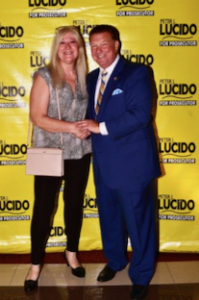 As part of the Obama Administration’s Mission Innovation effort to double clean energy research and development (R&D) investments over the next five years, the Energy Department today announced up to $25 million in available funding aimed at advancing technologies for energy-efficient electric motors through applied R&D. This effort will fund innovative technologies that will significantly increase the efficiency of electric motors, which use approximately 70% of the electricity consumed by U.S. manufacturers and nearly a quarter of all electricity consumed nationally.
As part of the Obama Administration’s Mission Innovation effort to double clean energy research and development (R&D) investments over the next five years, the Energy Department today announced up to $25 million in available funding aimed at advancing technologies for energy-efficient electric motors through applied R&D. This effort will fund innovative technologies that will significantly increase the efficiency of electric motors, which use approximately 70% of the electricity consumed by U.S. manufacturers and nearly a quarter of all electricity consumed nationally.
The Energy Department plans to select eight to twelve projects through the Next Generation of Electric Machines: Enabling Technologies funding opportunity. Specifically, this funding targets the development of key technologies that will enable further efficiency enhancements and weight reductions in a cost effective way, while addressing the limitations of traditional conductive metals and silicon-infused “electrical” steels used in motor components.
Funded by the Office of Energy Efficiency and Renewable Energy’s Advanced Manufacturing Office (AMO) and in support of our Clean Energy Manufacturing Initiative, these projects will leverage recent technical advancements made in nanomaterials research, a new 6.5% siliconizing process in steel manufacturing, and improved performance of high temperature superconductors. The projects also encourage research, development, and deployment of advanced magnets, high frequency insulation materials, and lead-free, low-loss bearing technologies that are critical for high speed electric motors.
AMO has identified four key technology areas to drive cost-effective efficiency enhancements and weight reductions while addressing the limitations of traditionally used conductive metals and electrical steels:
•Manufacturing of high performance thermal and electrical conductors
•Manufacturing of low-loss silicon steel
•High temperature superconducting wire manufacturing
•Manufacturing of other enabling technologies to increase performance.
These enabling technologies could help manufacturers cumulatively save nearly 44 terawatt-hours per year, roughly 1.6% of total U.S. electricity consumption, and pave the path for further savings in variable-speed motors. In addition, these enabling technologies will improve motors used in the growing clean energy sector, helping wind, solar, electric vehicle, and battery manufacturers.
Source: US Dept of Energy
Click here to be introduced to the US Dept of Energy



